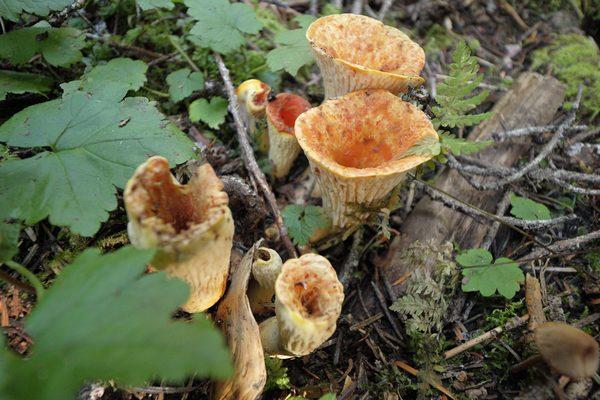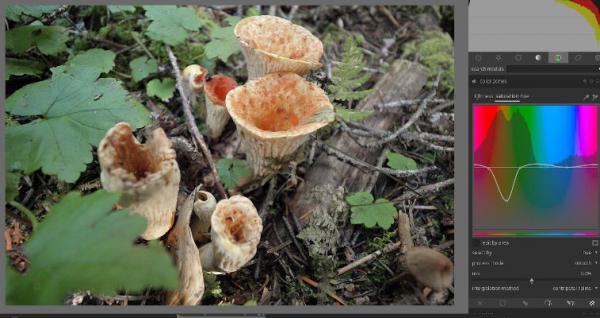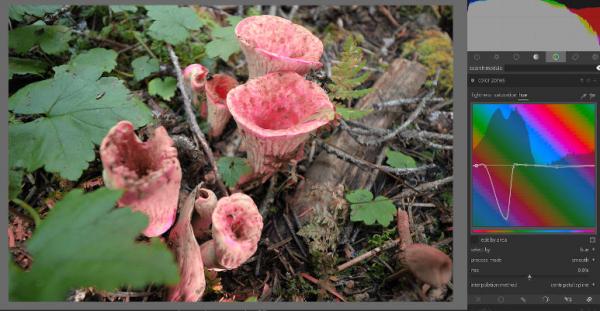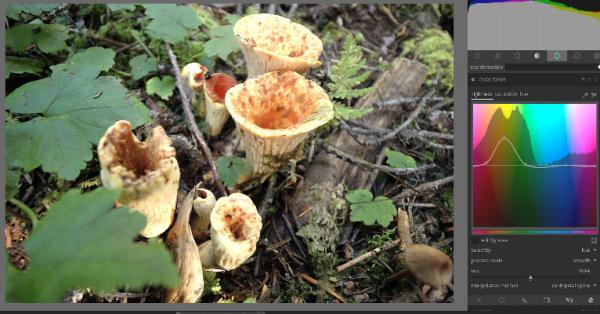lThanks -- Yeah resolve is for video, but darktable has this too, under the name "color zones".
It just takes the X axis as input e.g. hue and the curve determines output e.g. hue on the y axis.
In resolve you can do hue vs [hue/luminance/saturation], as well as [luminance/saturation] vs saturation.
For example, the following attachments, showing the original image, then a hue vs saturation that changes the mushroom's saturation, then a hue vs hue that changes its color, and then a hue vs lightness that changes its lightness. (These are crude examples just to get the idea across.)
It's a great way to selectively alter color in an image in a smooth way. I'm doing some visualizations of house painting and was hoping to be able to selectively and smoothly adjust colors. I don't mind (and will have to do) a little manual masking here and there, but I don't want to have to mask out every leaf and branch in the images to only adjust the colors I need to adjust. GIMP/G'MICs tools (as far as I have found so far?) are pretty coarse, it seems. But I suppose I can use darktable in conjunction. Unless there's an add-on I should know about?
original:

saturation dropped:

hue altered:

lightness increased:

![[Image: huevslum.jpg]](http://caseyconnor.org/pub/image/huevslum.jpg)
![[Image: huevslum.jpg]](http://caseyconnor.org/pub/image/huevslum.jpg)



